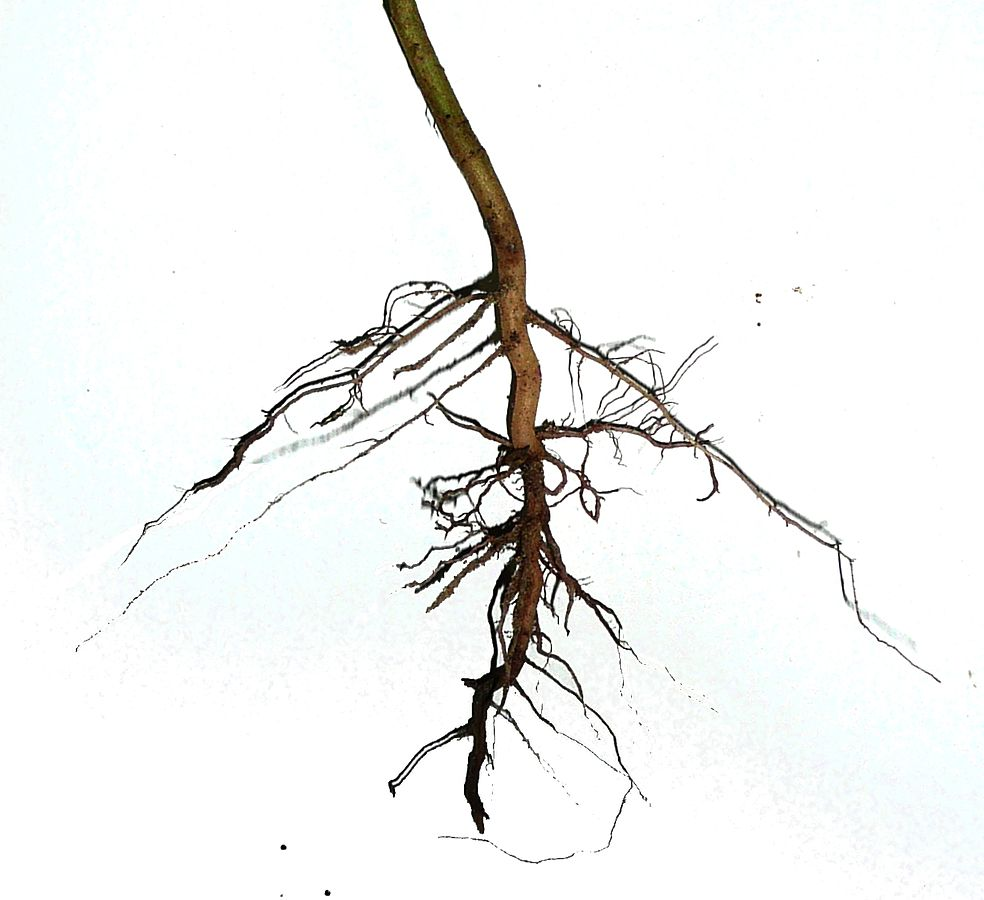
Draw a neat labeled diagram of the taproot system.
Answer
559.2k+ views
Hint: The roots are positively geotropic structures of the plant that grows downwards in the soil. The roots help in absorption of water along with other minerals. They also play an important role in the nitrogen cycle, due to the bacteria present in them.
Complete answer:

The taproot is a central, dominant, and large root from where the other roots sprout in the lateral direction. Typically a taproot grows directly downward, tapering in shape, thick, and straight. In plants like carrots, radish, these taproots work as a storage organ, and due to which they are cultivated to be a vegetable.
The taproots develop through the radicle present in the seed, and then form a primary root. This primary root then branches to form secondary roots, and then on further branching tertiary roots are formed. After germination, the radicle dies in most species of plant, that results in development of the fibrous root system and it lacks the downward growth of the root.
Initially, trees start their life in the form of taproot but after a while their root system gets changed into fibrous root system. Most of the plants consisting of taproots are difficult to transplant, because their roots tend to grow rapidly, and if the taproot gets damaged then the plant could die.
Note: The taproots vary in shape. The conical shape is wide at the top and tapering at the end. The fusiform roots are wide in the middle and tapering in the bottom and top. The napiform roots have a toy top-like appearance.
Complete answer:

The taproot is a central, dominant, and large root from where the other roots sprout in the lateral direction. Typically a taproot grows directly downward, tapering in shape, thick, and straight. In plants like carrots, radish, these taproots work as a storage organ, and due to which they are cultivated to be a vegetable.
The taproots develop through the radicle present in the seed, and then form a primary root. This primary root then branches to form secondary roots, and then on further branching tertiary roots are formed. After germination, the radicle dies in most species of plant, that results in development of the fibrous root system and it lacks the downward growth of the root.
Initially, trees start their life in the form of taproot but after a while their root system gets changed into fibrous root system. Most of the plants consisting of taproots are difficult to transplant, because their roots tend to grow rapidly, and if the taproot gets damaged then the plant could die.
Note: The taproots vary in shape. The conical shape is wide at the top and tapering at the end. The fusiform roots are wide in the middle and tapering in the bottom and top. The napiform roots have a toy top-like appearance.
Recently Updated Pages
Master Class 11 Business Studies: Engaging Questions & Answers for Success

Master Class 11 English: Engaging Questions & Answers for Success

Master Class 11 Computer Science: Engaging Questions & Answers for Success

Master Class 11 Social Science: Engaging Questions & Answers for Success

Master Class 11 Maths: Engaging Questions & Answers for Success

Master Class 11 Biology: Engaging Questions & Answers for Success

Trending doubts
Differentiate between an exothermic and an endothermic class 11 chemistry CBSE

10 examples of friction in our daily life

One Metric ton is equal to kg A 10000 B 1000 C 100 class 11 physics CBSE

Difference Between Prokaryotic Cells and Eukaryotic Cells

State the laws of reflection of light

Explain zero factorial class 11 maths CBSE




